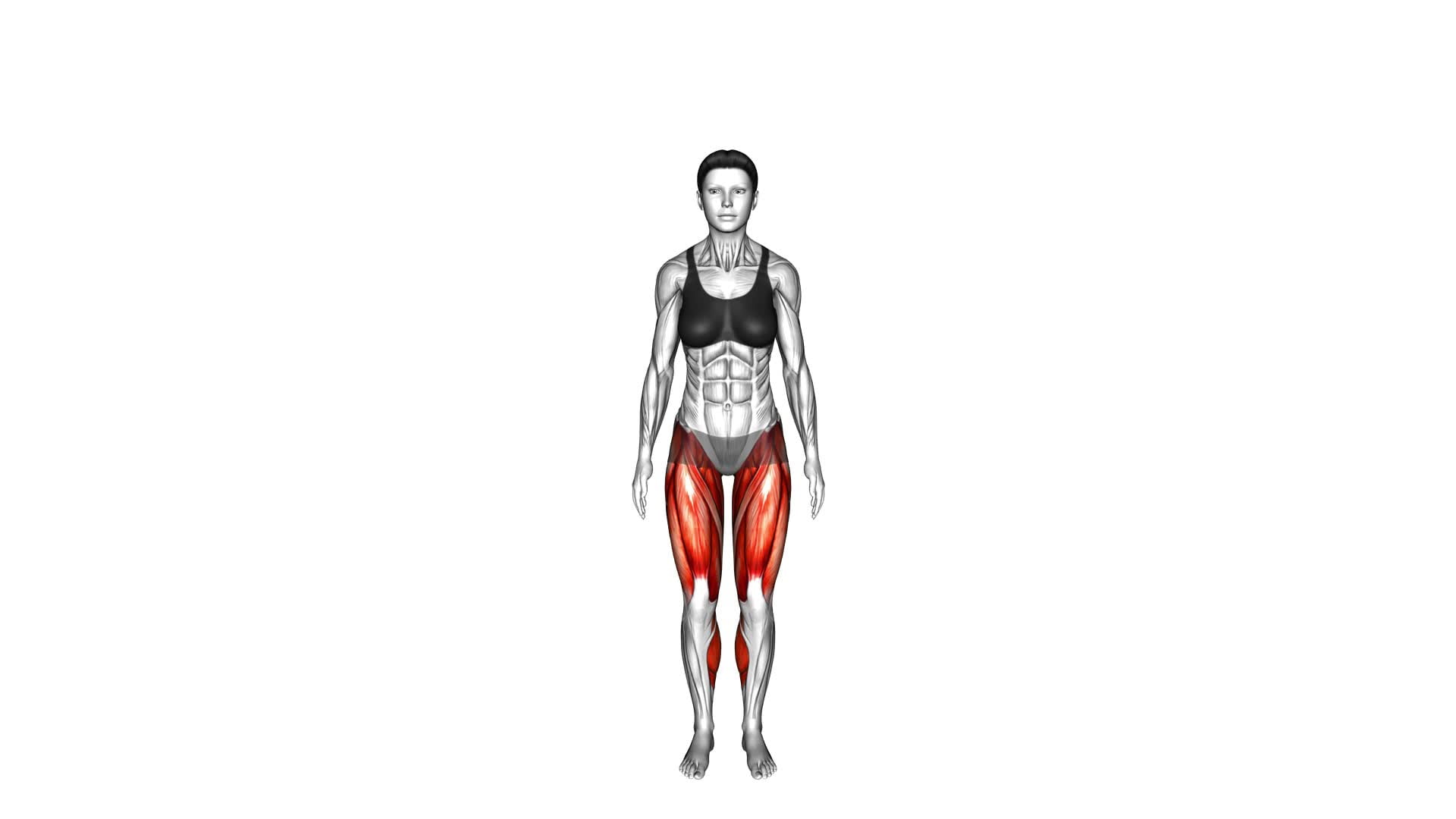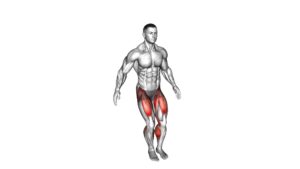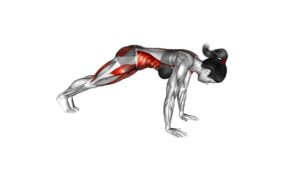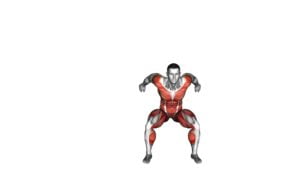Side Lunge Hop (female) – Video Exercise Guide & Tips

Are you looking to amp up your workout routine? Get ready to try the side lunge hop! This exercise targets your legs, glutes, and core while adding an element of cardio.
Watch This Exercise Video
In this video exercise guide, we'll show you the proper form and technique, modifications for beginners, and common mistakes to avoid.
Plus, we'll give you tips for a more effective workout. Get ready to lunge and hop your way to a stronger, fitter you!
Key Takeaways
- Side lunge hop strengthens lower body muscles such as glutes, quadriceps, hamstrings, and calves.
- It improves overall balance, stability, and challenges core muscles.
- The exercise adds plyometric training for increased lower body strength and power.
- Proper form and technique are important to maintain throughout the exercise to prevent injuries and maximize benefits.
Benefits of the Side Lunge Hop
One key benefit of the Side Lunge Hop is that it strengthens your lower body muscles. This exercise specifically targets your glutes, quadriceps, hamstrings, and calves, helping to increase lower body strength. By regularly performing the Side Lunge Hop, you can expect to see improvements in your overall balance and stability.
When you engage in the Side Lunge Hop, you're required to maintain your body's equilibrium while performing the lateral movement. This helps to challenge your core muscles and improve your balance over time. Additionally, the explosive nature of the hop adds an element of plyometric training, which further enhances lower body strength and power.
To properly execute the Side Lunge Hop, start by standing with your feet hip-width apart. Take a wide step to the side, bending your knee and lowering your body into a lunge position. From there, push off with your bent leg, hopping to the opposite side and landing softly. Repeat the movement for the desired number of repetitions.
Proper Form and Technique
To perform the Side Lunge Hop correctly, start by standing with your feet hip-width apart. This exercise is great for improving balance and increasing flexibility.
Begin by taking a step to the side with your right foot, bending your right knee and pushing your hips back into a lunge position. As you lunge, keep your left leg straight and your left foot firmly planted on the ground. Then, push off with your right foot, hopping back to the starting position and landing softly on both feet. Remember to engage your core and keep your chest lifted throughout the movement.
Repeat the same sequence on the other side, stepping to the left and lunging with your left foot. As you become more comfortable with the exercise, you can increase the speed and intensity of the hops to challenge yourself further. By maintaining proper form and technique, you'll maximize the benefits of improving your balance and increasing your flexibility.
Now, let's move on to discussing modifications for beginners.
Modifications for Beginners
If you're a beginner, modify the Side Lunge Hop by performing the exercise at a slower pace. This will allow you to focus on your form and gradually build strength and stability.
Here are some progression options and safety precautions to keep in mind:
- Slow down: Take your time with each movement, ensuring that you're maintaining proper form throughout the exercise. This will help prevent injuries and allow you to better control your movements.
- Decrease the range of motion: Instead of lunging as far to the side, start with smaller steps. As you become more comfortable and confident, you can gradually increase the range of motion.
- Use a support: If you're having difficulty balancing during the side lunge hop, you can hold onto a chair or wall for support. This will help you maintain stability as you work on improving your balance.
Common Mistakes to Avoid
Avoid rushing through the Side Lunge Hop exercise to maintain proper form and prevent potential injuries. When performing this exercise, it's important to be aware of common mistakes that can hinder your progress and potentially lead to injury.
One common mistake isn't properly aligning your knees and toes during the lunge. Make sure that your knee is directly above your ankle and that your toes are pointed forward to prevent unnecessary strain on your joints.
Another mistake to avoid isn't engaging your core muscles. Your core plays a crucial role in stabilizing your body during the exercise, so remember to tighten your abdominal muscles throughout the movement.
Additionally, avoid leaning too far forward or backward during the lunge. This can put excessive strain on your lower back and increase the risk of injury. Instead, maintain an upright posture throughout the exercise.
Lastly, be mindful of your landing when hopping from one side to the other. Land softly with a slight bend in your knees to absorb the impact and reduce the risk of knee or ankle injuries.
Tips for a More Effective Workout
Maximize your workout by incorporating these tips for a more effective Side Lunge Hop.
- Increase intensity: To make the Side Lunge Hop more challenging and maximize your results, try increasing the intensity of your movements. Instead of just hopping to the side, focus on exploding off the ground with each hop, engaging your glutes and leg muscles to their fullest potential. This won't only increase the calorie burn but also help build strength and power in your lower body.
- Incorporate resistance: Another way to amp up the effectiveness of your Side Lunge Hop is by adding resistance. This can be done by using dumbbells or resistance bands. Holding a dumbbell in each hand or placing a resistance band around your thighs will add extra resistance to the exercise, forcing your muscles to work harder. This will help tone and sculpt your legs, making your workout even more effective.
- Vary your speed: Don't be afraid to mix up the speed of your Side Lunge Hops. By incorporating both fast and slow movements, you can challenge your muscles in different ways. Slow, controlled lunges will help build strength and stability, while quick, explosive hops will improve your power and agility. By varying your speed, you'll keep your workout interesting and continuously challenge your body.
Incorporating these tips into your Side Lunge Hop routine will help you increase the intensity of your workout and maximize your results. Remember to listen to your body and adjust the intensity and resistance as needed to ensure a safe and effective workout.
Frequently Asked Questions
How Many Calories Can I Expect to Burn While Doing the Side Lunge Hop?
When you do the side lunge hop, you can expect to burn calories and get a good workout. The number of calories burned will depend on various factors, such as your body weight, intensity level, and duration of the exercise.
Can I Incorporate Weights or Resistance Bands Into the Side Lunge Hop for Added Intensity?
Yes, you can definitely incorporate weights or resistance bands into the side lunge hop to add intensity to your workout. By using weights or resistance bands, you'll challenge your muscles and increase the resistance, making the exercise more effective in building strength and toning your lower body.
Just make sure to choose weights or resistance bands that are appropriate for your fitness level and always maintain proper form to avoid injury.
Is the Side Lunge Hop Suitable for Individuals With Knee or Hip Issues?
If you have knee or hip issues, you may want to consider modifying the side lunge hop to make it more suitable for you.
Side lunge modifications, such as reducing the depth of the lunge or using a support for balance, can help alleviate strain on your joints.
Additionally, there are alternative exercises that can provide a similar workout without putting as much pressure on your knees and hips.
How Often Should I Include the Side Lunge Hop in My Workout Routine?
Including the side lunge hop in your workout routine depends on your fitness level and goals.
If you're a beginner, start by modifying the exercise. You can perform the side lunge without the hop or reduce the range of motion.
For advanced exercisers, there are variations to challenge you further. You can add weights, perform jump lunges, or incorporate a medicine ball.
Remember to listen to your body and consult with a fitness professional if needed.
Can the Side Lunge Hop Help Improve My Balance and Coordination?
Improving your balance and coordination is important for overall fitness.
One exercise that can help with this is the side lunge hop. By incorporating this movement into your workout routine, you can challenge your stability and enhance your coordination skills.
The side lunge hop requires you to engage multiple muscle groups, promoting better balance and coordination. It's a great exercise to add variety and effectiveness to your fitness regimen.
Conclusion
In conclusion, the side lunge hop is a dynamic exercise that offers numerous benefits, including improved lower body strength, balance, and coordination.
By maintaining proper form and technique, and making modifications as needed, beginners can safely incorporate this exercise into their fitness routine.
Avoiding common mistakes and following the provided tips will ensure a more effective workout.
So, give the side lunge hop a try and enjoy the benefits of this challenging and rewarding exercise.

Author
Years ago, the spark of my life’s passion ignited in my mind the moment I stepped into the local gym for the first time. The inaugural bead of perspiration, the initial endeavor, the very first surge of endorphins, and a sense of pride that washed over me post-workout marked the beginning of my deep-seated interest in strength sports, fitness, and sports nutrition. This very curiosity blossomed rapidly into a profound fascination, propelling me to earn a Master’s degree in Physical Education from the Academy of Physical Education in Krakow, followed by a Sports Manager diploma from the Jagiellonian University. My journey of growth led me to gain more specialized qualifications, such as being a certified personal trainer with a focus on sports dietetics, a lifeguard, and an instructor for wellness and corrective gymnastics. Theoretical knowledge paired seamlessly with practical experience, reinforcing my belief that the transformation of individuals under my guidance was also a reflection of my personal growth. This belief holds true even today. Each day, I strive to push the boundaries and explore new realms. These realms gently elevate me to greater heights. The unique combination of passion for my field and the continuous quest for growth fuels my drive to break new ground.







